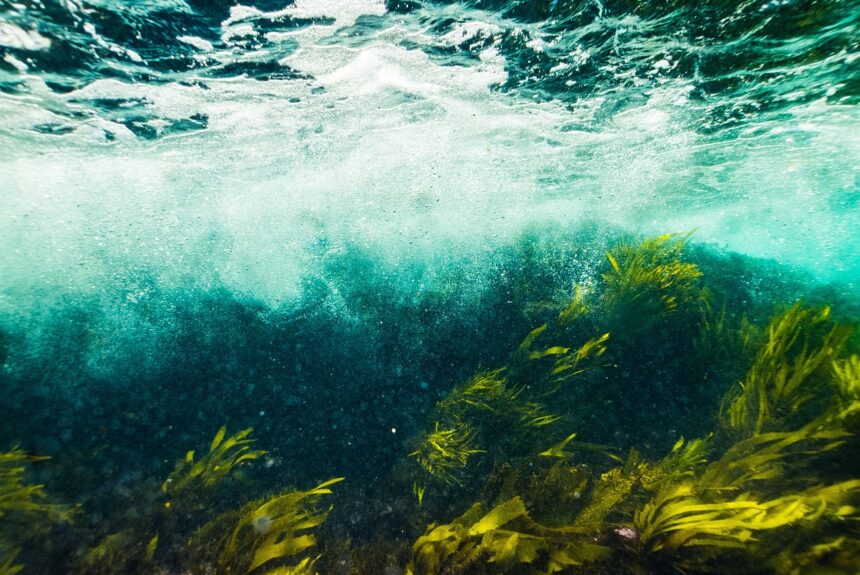Last year, the University of California, Santa Cruz, co-hosted a workshop with the Monterey Bay Aquarium to bridge the gap between scientific research and practical use for one key thing: kelp. For most Americans, the familiarity with kelp is seeing it washed up along the beach. Still, an entire workshop dedicated exclusively to kelp begs the question: How much does kelp matter?
The answer? Kelp matters quite a bit. In fact, it contributes $500 billion annually to the global economy.
What is kelp?
Kelp is an algae that thrives underwater. It is a form of seaweed, but unlike other types, it roots itself in one place to grow. The plant grows in large vertical clusters, forming dense groups like underwater forests.
Kelp forests are typical off the U.S. Pacific Coast. They are thriving habitats for marine life, such as fish, whales, seals, sea lions, and seabirds. These shallow-water algae clusters provide food and protection from predators and the elements.
Why does kelp have such a substantial economic impact?
A 2023 study published in Nature assessed kelp’s economic impact. Researchers looked at factors such as its impact on coastal economies, carbon sequestration, and removing harmful nutrients from seawater. The result is an estimated annual positive impact of at least $500 billion, possibly up to $562 billion, on the global economy.
Kelp forests increase fisheries production at an estimated $11,700 and $29,500 per acre annually. Part of this is through the benefits to marine life detailed in the above section on kelp. However, kelp also helps filter harmful nutrients, like excessive nitrogen, from the areas where it grows, helping balance the waters around it to support a thriving marine environment.
>>>READ: Direct Ocean Capture Could Amplify Natural Carbon Sinks
Carbon sequestration is also an essential benefit of kelp. Studies show that kelp may sequester as much carbon as seagrass meadows or forests on land, with an estimated economic value of $66 per acre annually. “The quantity of carbon that kelp forests capture and sequester is very high, and it’s similar to other critical habitats,” says Adriana Vergés, a professor of marine ecology at the University of New South Wales. “But the value is low, and that’s just because the dollar value of carbon is low.”
The study emphasizes kelp’s increasing popularity as an ingredient in household products. One example is using seaweed to create vegan alternatives to supplements that traditionally use animal products, like fish oil. The National Ocean Service asserts that kelp is used in everything from toothpaste to salad dressings to frozen foods.
What is being done in the United States to protect kelp?
Kelp is essential for creating products we can use in the water as it grows and when harvested. However, the latter has the potential to cause problems. The National Ocean Service estimates that between 100,000 and 170,000 tons of kelp are harvested annually in just the waters off of California. This figure does not account for harvests that may be happening in other states with kelp forests.
As important as it is to reap the benefits of kelp as an ingredient, it is even more critical to ensure we maintain healthy kelp forests that can support marine life and sequester carbon for decades. Excessive harvest of kelp is one factor that could impact the health of local kelp forests, but changing marine life populations and human activity that result in pollution or overfishing threatens healthy kelp, too. What is being done in the United States to keep these forests?
Many activists are pushing for more local regulation to protect kelp. While the residents of any given community best decide that topic, it is worth noting that many kelp already grow in marine protected areas. Commercial activity is limited in these waters, and restrictions are placed on the treatment of underwater environments and the removal of things from the water.
>>>READ: SeaTrees is Transforming Blue Carbon Ecosystems From a Carbon Sink to a Climate Solution
Innovative tools like Kelpwatch, which uses satellite imagery, can help researchers see changes in kelp forests. Conservation projects work to restore kelp forests to their full glory. Animals like sea otters have even been reintroduced in certain areas to help restore the food chain balance needed for kelp to thrive. Kelp might be threatened by a changing marine environment and human activity, but local activists, environmentalists, scientists, and policymakers are working hard to protect these critical underwater forests.
Kelp matters. But thanks to market incentives and conservation efforts, kelp forests will continue to thrive.
The views and opinions expressed are those of the author’s and do not necessarily reflect the official policy or position of C3.
